Plants for rockeries: 16 top choices for rock gardens
Our selection of the best plants for rockeries will all thrive in the well drained soil of your rock garden

Zia Allaway
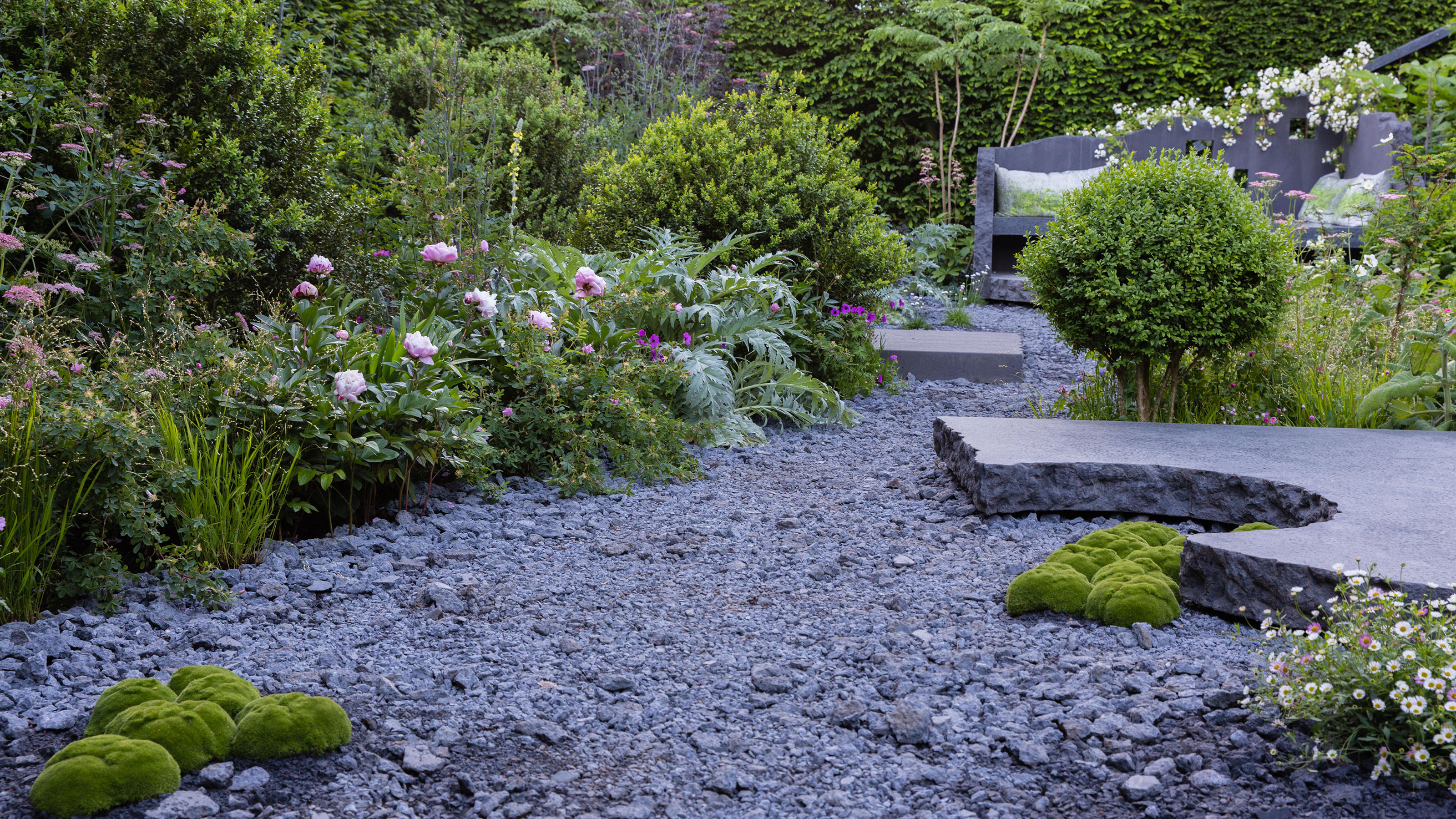
The best plants for rockeries are low maintenance, will tolerate a little neglect and a lack of watering, and can transform a rocky area into a stunning plant paradise. The addition of a few well chosen plants in key areas will stop your rock garden looking baron.
Rock gardens tend to work best in sunny spots, therefore sun-loving plants will be a must in your planting scheme. There may also be shady spots, behind large stones or in cracks, which will require shade-tolerant varieties. Creeping ground cover plants will soften the harsh edges of rocks, whilst alpine blooms and suitable bulbs will add color and provide nectar for pollinators.
Part of the process of learning how to build a rock garden is to think about where you'll be placing your plants before you make your final selection. And once you've made your choices, lay them out in their arrangement and make sure around 40 to 60 per cent of your area is given to planting. Don't be tempted to pack in too many plants in the beginning as you will need to leave room for your plants to spread over time.
Whatever you decide to do, rest assured that your new rockery will be low maintenance. 'Being generally small plants, alpines need less water,' explains alpine expert Michael Mitchell, from Slack Top Alpine Nursery. 'And the majority are easy to grow, needing only well-drained soil and good light (although some grow in shade).' He recommends planting small cushion alpines in a geometric pattern, divided up with pieces of slate, for a modern look.
Our favorite plants for rockeries will give a lush edge to your planting
Whether you're looking to add color interest with alpine blooms or soften hard edges with creeping ground-cover plants, these varieties all make fantastic plants for rockeries.
1. Rock jasmine (Androsace studiosorum)
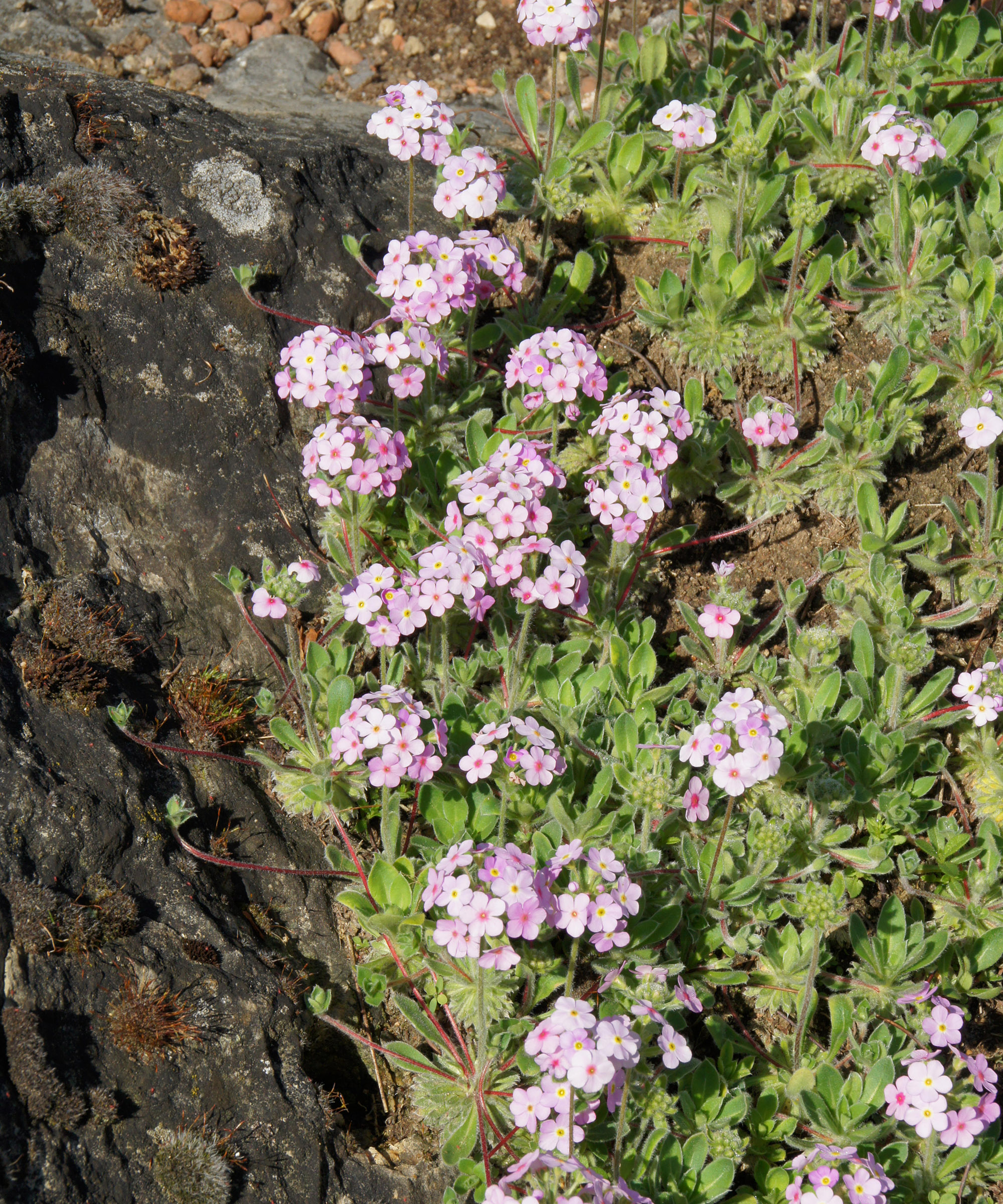
This little evergreen perennial plant will soon spread to form a low-growing mat of foliage and colorful flowers in a modern rock garden. The silky hairs on the leaves make them look silvery, especially in winter, and the clusters of small pink flowers appear in spring.
Luke Whiting, who runs the alpine specialist nursery D’Arcy & Everest recommends ‘Salmon’s Variety’ which has deep pink blooms and flowers later, from June to August.
2. Storksbill (Erodium species)

With its long flowering period from May to September, Luke Whiting says the storksbill is a must-have for any size space, whether you're on the lookout for small rock garden ideas or something to suit a larger feature rockery.
Featuring scalloped foliage and rounded pink flowers, this ground-hugging perennial generally reaches just 4in (10cm) in height, although the variety ‘Matilda’s Purple’ is a little taller, and will bloom all summer long. If you like the look of storksbills, then plant them in a sunny spot.
3. Heart-leaved globe daisy (Globularia cordifolia)

The fluffy looking blue pompon flowers of these diminutive evergreen perennials are real eye-catchers. They also bring foliage interest with long spoon-shaped leaves which add even more value to this little plant’s appeal.
It's also a brilliant bee-friendly plant, so plant it in a sunny location and you will be rewarded with pollinators flocking to your plot over a long period from April to July.
4. Heuchera pulchellum
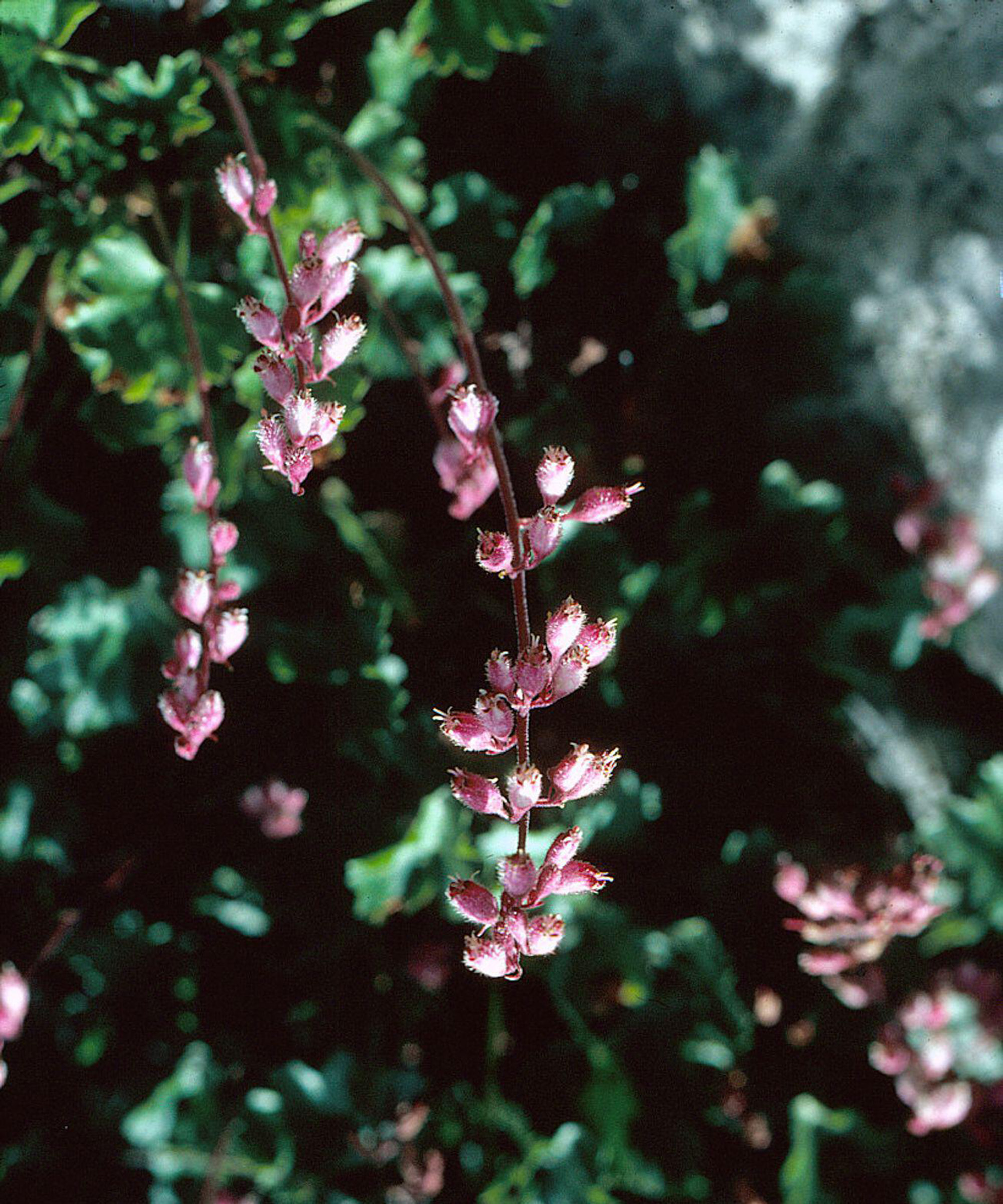
This dwarf heuchera is perfect for a rock garden and, like its larger cousins which are widely regarded as one of the best foliage plants, it tolerates some shade, making it useful for areas where the sun-lovers will struggle.
Its tiny overwintering leaves are just half an inch (1-2cm) in diameter and the stems of soft pink flowers, which appear in spring and summer, reach 4-6in (10-15cm) in height.
5. Siskiyou lewisia (Lewisia cotyledon)
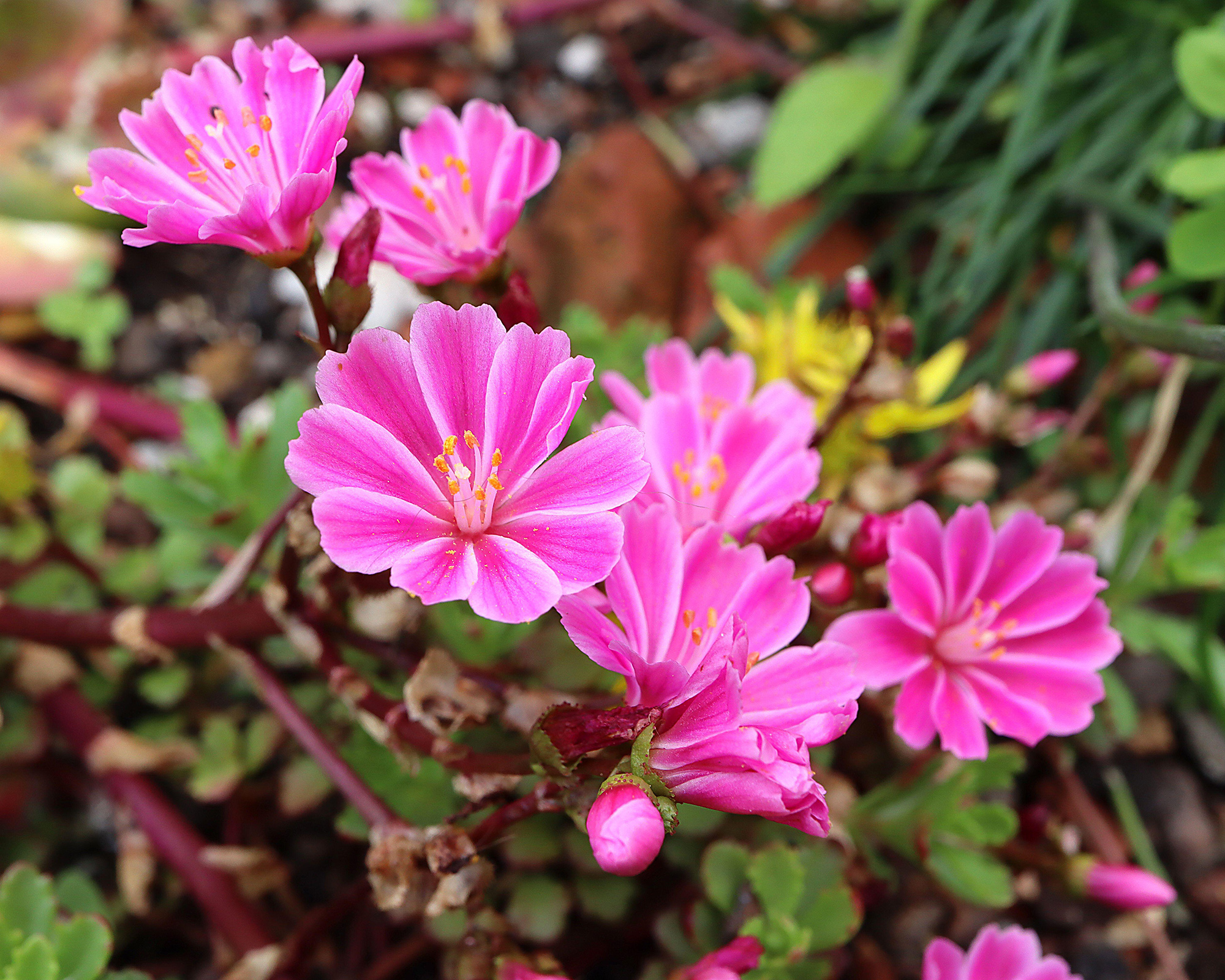
Strappy leaves set off the rounded blooms of this little evergreen perennial, which comes in an array of flower colors, including white, pink, peach and red.
Reaching about 8in (20cm) in height, it blooms from spring to summer and tolerates a few hours of shade each day. Luke Whiting recommends the variety ‘Darcies Gems’ with its mix of vibrant colors.
6. Cushion bush (Scleranthus biflorus)
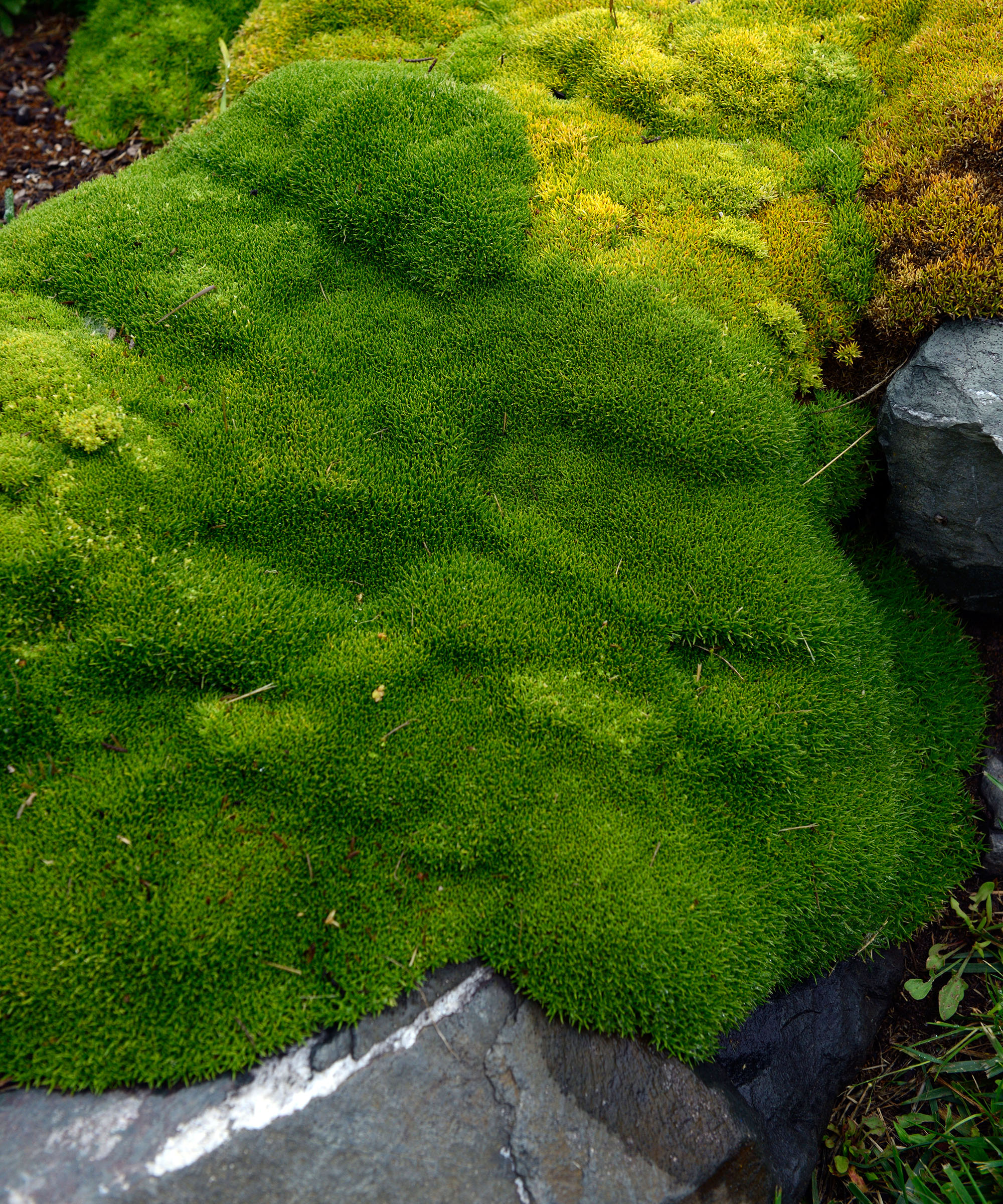
Often used in Japanese garden ideas, this unusual moss-like plant is so incredibly lovable. The cushion bush spreads to form a ground-hugging mat of tiny bright green leaves which look soft enough to sleep on.
The softness provides a cool contrast to more flamboyant plants for rock gardens. It tolerates sun or shade, and appears bronze in summer when masses of tiny flowers appear and the foliage also takes on a yellow hue, if grown in sun.
7. Sempervivum
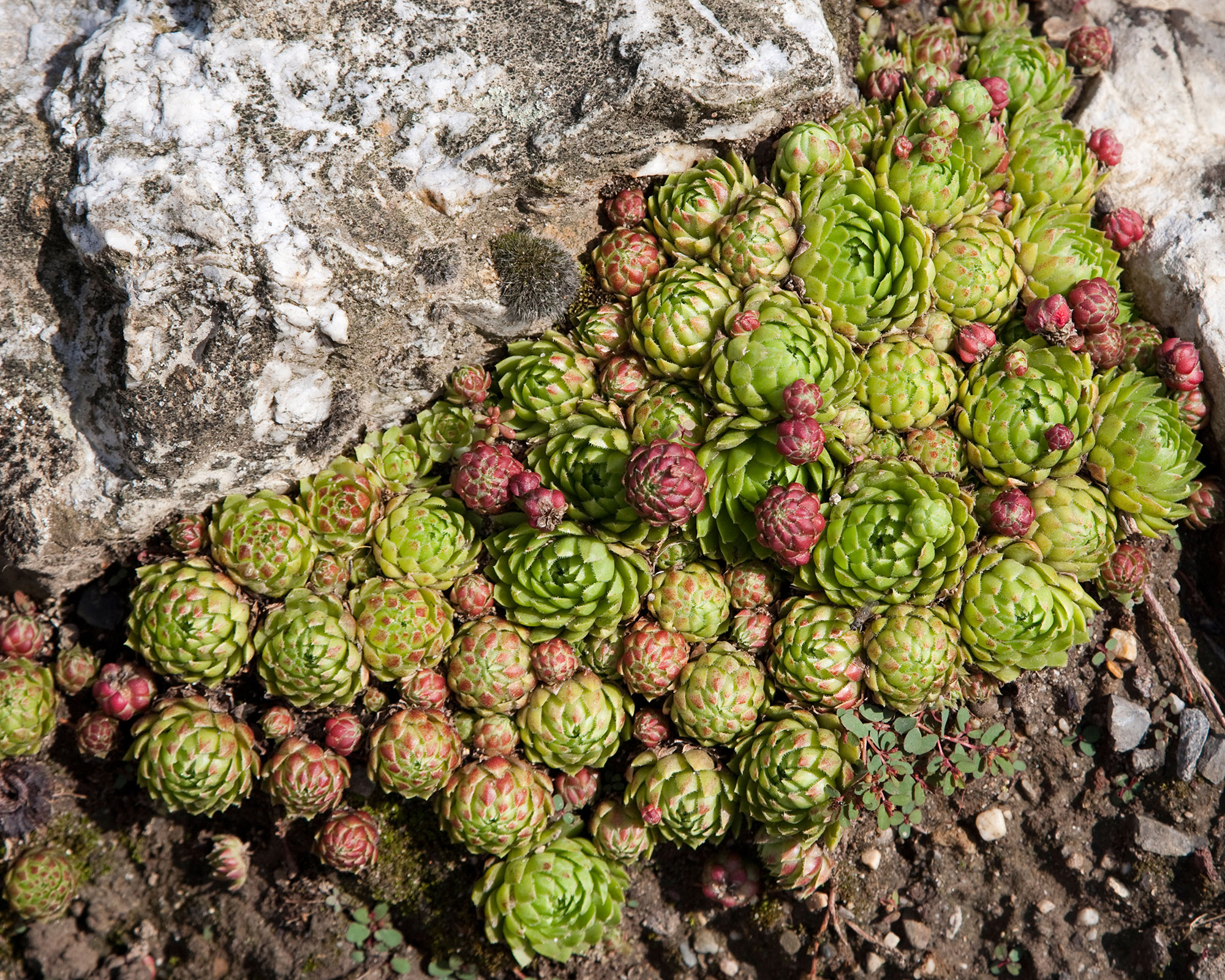
These plants are commonly known as houseleeks and used to be grown on roofs to protect against fire and lightning. Incredibly popular for succulent garden ideas, they are tough little plants that are very hardy and like free-draining soil, making them ideal rock garden plants.
But it's not just their sculptural forms which makes them popular in a rockery. In summer you'll see flowers appearing on top of raised stems. Succulents are easily propagated by taking cuttings from plants too so you can increase your stocks by poking leaves into cracks and crevices.
8. Sedum spathulifolium
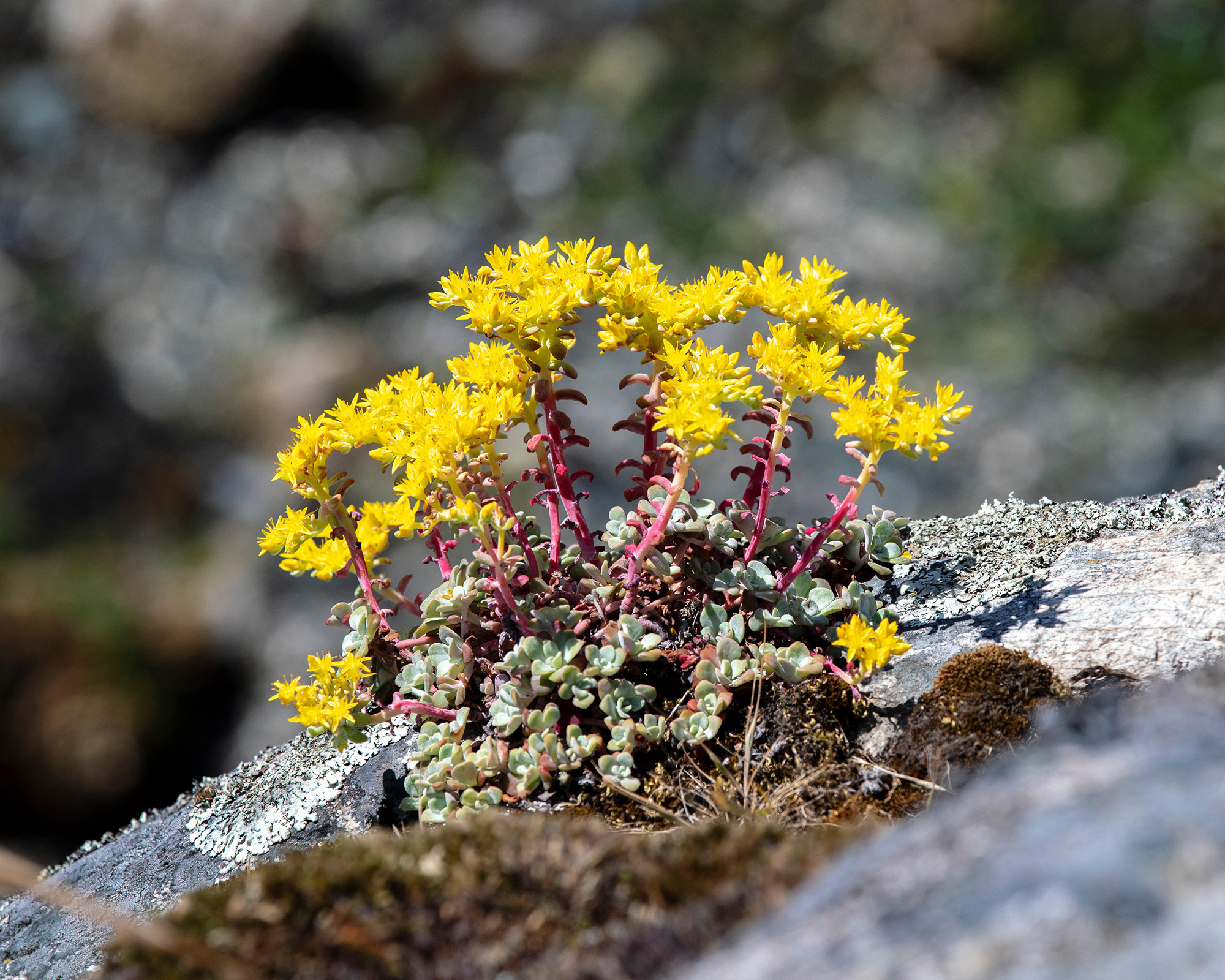
This low-growing, creeping, evergreen stonecrop has tightly packed, rounded leaves. The purple-tinged grey foliage is an effective backdrop to yellow star-like summer flowers.
Use this as a ground cover plant in your rock garden. It's hardy and it likes full sun and well-drained soil so it will suit the conditions perfectly.
9. Crocus
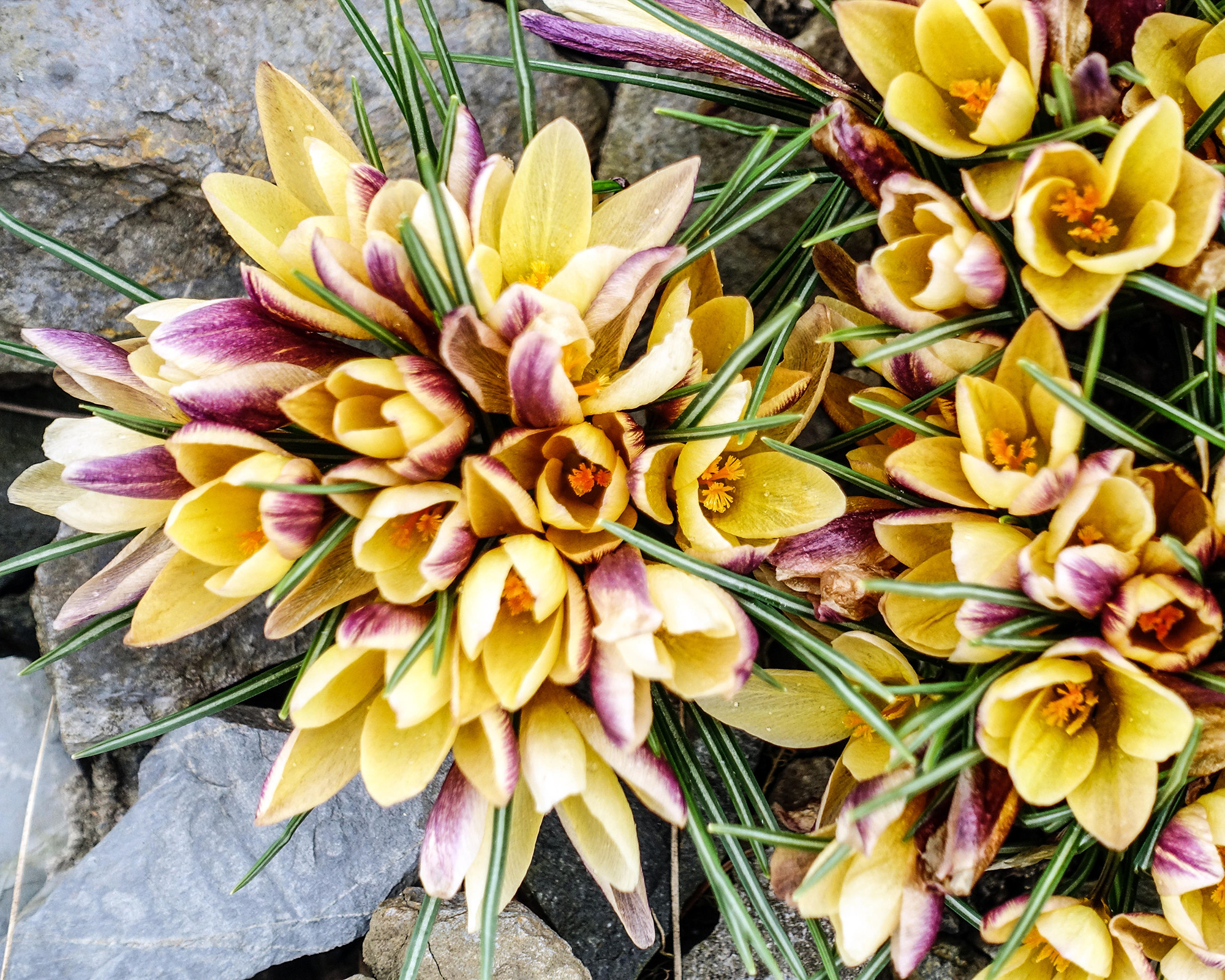
Crocus chrysanthus comes in a wide range of pretty colors and bicolors including ‘Snow Bunting’ (cream), ‘Blue Pearl’ and 'Advance' (multi-colored).
For the most visual impact plant crocus bulbs in clumps. It likes full sun and well-drained soil. As with other spring flowering bulbs, you'll want to get these into the ground before autumn is through.
10. Dianthus

These are small alpine plants which you might have also heard referred to as 'pinks'. They have a pretty blue-grey foliage and a mass of dainty blooms, which tend to open after when other alpines are over. Look for ‘La Bourboule’ (pink), ‘Evening Star’ (pink and crimson) and others in the Star Series.
Some varieties such as Dianthus 'Memories' will even give off a beautiful clove like scent, making them a welcome addition to a serene rock garden space. They need good drainage and poor fertility to thrive. That's right, the worse your soil quality the better for these rock garden plants.
11. Gentiana

When it comes to classic plants for rockeries, this alpine is hard to beat. The penetrating blue flowers of G. verna, held on tight little evergreen plants, are captivating. They prefer limy soil, so add a little lime or some limestone chips to your rock garden if you choose these.
Though they like well drained soil gentianas like a little moisture too and can cope in partial shade. Their mat-forming properties make them excellent plants for rock gardens.
12. Phlox

Don’t overlook this floriferous plant when searching for ground cover to fill difficult spaces in rock gardens. Amateur Gardening expert Anne Swithinbank advises: 'Set plants 12in (30cm) apart in good but well-drained soil in full sun for the best results, as plants can look worse for wear if they suffer waterlogging in winter or drought in summer.'
Low, creeping and vigorous, alpine phlox are ideal plants for container garden ideas with a rock garden twist. So if you've created a small-scale rock garden in a raised bed or planter, position your phlox plants at the sides and allow them to trail down over the edges of the container.
Some of our favorites are ‘Tamaongalei’ (pink and white bicolour) and ‘Eva’ (pale pink).
13. Pulsatilla
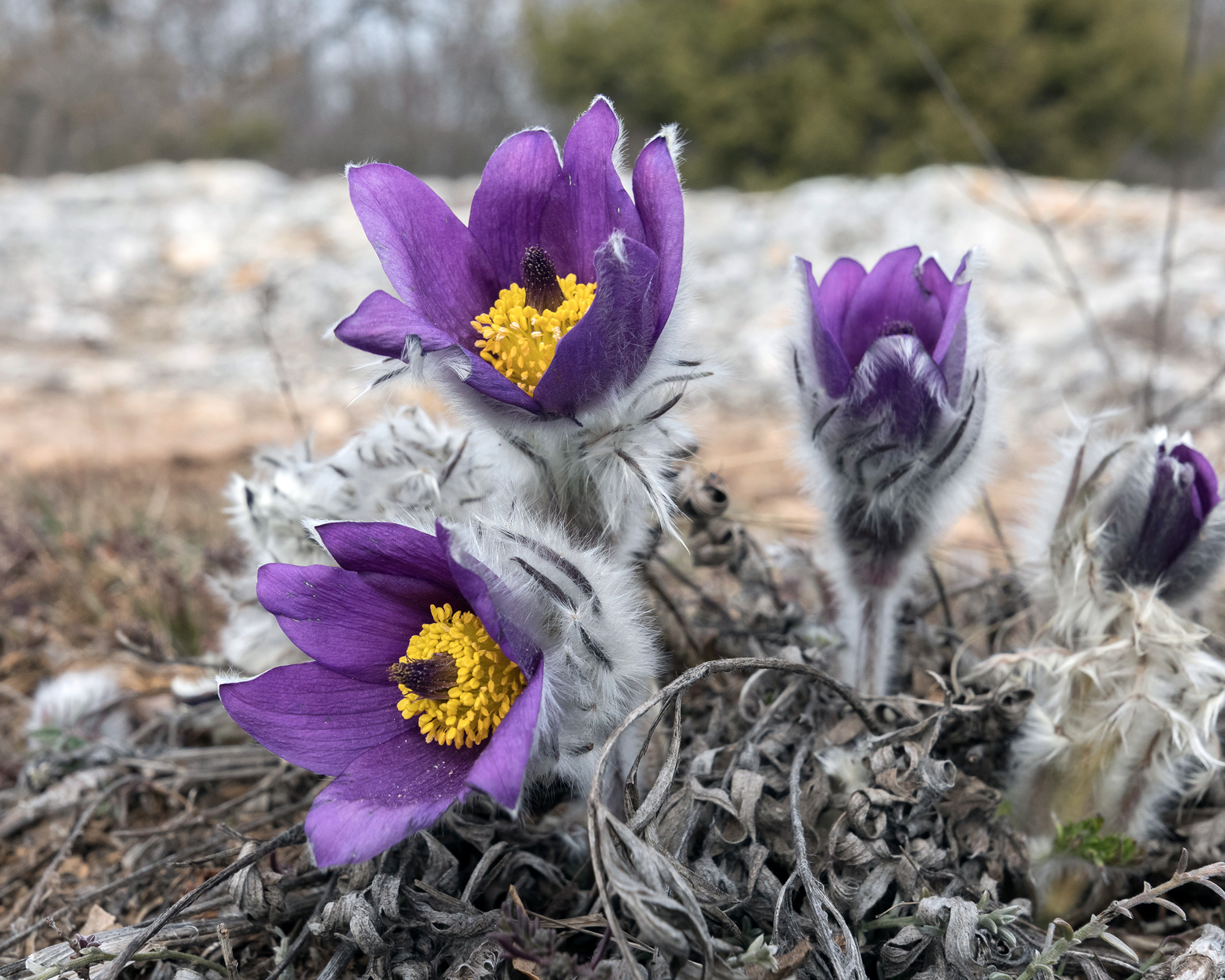
The purple, red, pink or white bells of P. vulgaris nod on upright stems, and are followed by fluffy seedheads. Slowly building into tight but prolific clumps with feathery foliage, look for white cultivar ‘Alba’ and pale-pink ‘Pearl Bells’.
If you want to learn how to grow flowers from seed, you can start P. vulgaris and other varieties of pasqueflower in January. They should be sown in 4in (12cm) pots of gritty compost. Cover the seed with even more grit and stand the pots outside to chill. Germination should start in spring, once the weather warms and they can then be added to your rock garden.
14. Erigeron karvinskianus
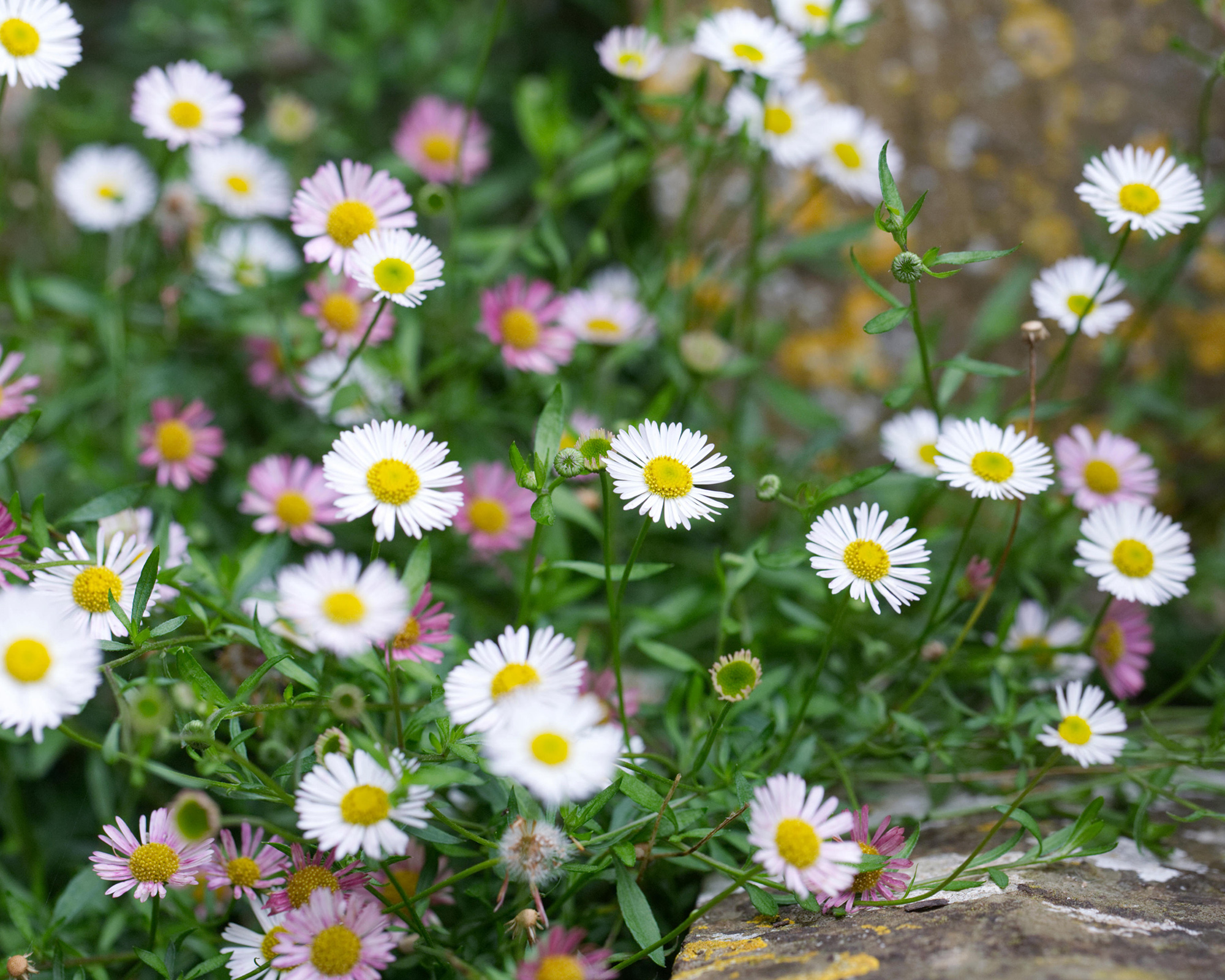
This low-maintenance perennial is covered in white and pink daisy-like blooms from June to October. It's one of the best budget plants as it will give you more plants with no extra cost (or work for that matter). Now that's value as far as we're concerned.
Once planted, it will self-seed, taking up residence in paving cracks and wall crevices to fill your rock garden with color. Eventually it will reach about a foot in height.
15. Allium sikkimense

Also known as the Himalayan allium because of its origins in the Himalayas in Tibet, which should give you an idea of the sort of habitat they are used to.
With clusters of blue flowers above narrow green foliage, the prefer full sun but can also be used as shade loving plants. Their overall height is about 4in (10cm).
16. Crepis incana

It's also known as the ‘pink dandelion’ and their appearance i.e. a cluster of petals is quite similar to the classic yellow dandelion. Unlike dandelions, however, it won’t seed itself.
It will like a sunny spot in a south- or west-facing rock garden. Pretty pink flowers appear above grey leaves and it will grow to a height of 12in (30cm).
What are the benefits of planting flowers in a rockery?
There are lots of flowers which will make incredible plants for rockeries. In fact, without the addition of drought tolerant plants you might find your rock garden seems a little drab. Not to mention having flowers in your garden is far more beneficial for pollinators.
Dianthus, phlox, and crocus will all work well. And the classic rock garden succulent Sempervivum will also flower at certain times of year. We particularly like the variegated Sedum kamtshaticum ‘Variegatum’ as it's a great value plant which will flower all summer.

Teresa has worked as an Editor on a number of gardening magazines for three years now. So she is lucky enough to see and write about gardening across all sizes, budgets and abilities. She recently moved into her first home and the garden is a real project! Currently she is relishing planning her own design and planting schemes. What she is most passionate about when it comes to gardening are the positive effects it has on our mental health to grow and care for plants, as well as being great for the environment too and help provide food and shelter for wildlife.
- Zia AllawayFreelance writer
